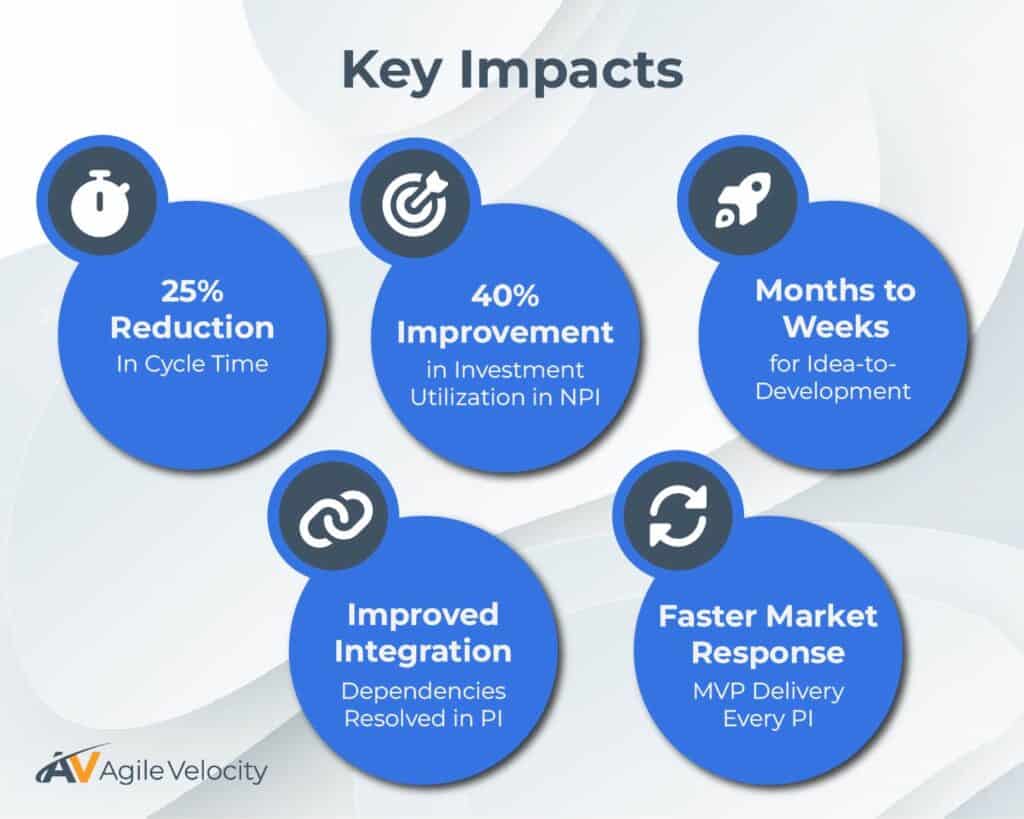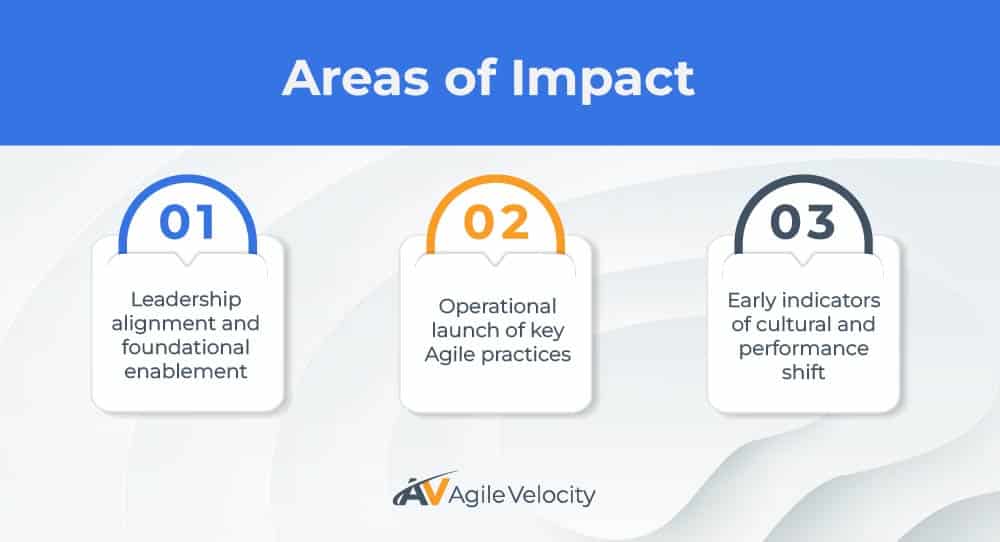
Qualitrol, a global leader in condition-based monitoring solutions, faced a critical challenge: siloed delivery, unpredictable timelines, and a perfection-driven culture that slowed innovation. Partnering with Agile Velocity, the company shifted to scaled Agile practices, built cross-functional alignment, and achieved measurable improvements in speed, predictability, and business impact.

“Agile Velocity helped us move from siloed, perfection-first delivery to a predictable, value-driven approach. The cultural shift and business impact have been remarkable.“
Anis Zribi, VP of R&D, Qualitrol Inc.
Client Overview
Client: Qualitrol Inc.
Industry: Condition-based monitoring solutions for electrical power generation, transmission, and distribution
Client Goals
Qualitrol set out to:
- Move beyond team-level Scrum toward enterprise-scale agility.
- Link strategy to execution through value-aligned planning, MVPs, and incremental validation.
- Establish predictable cadence and visibility for product launches.
- Improve alignment, ownership, and accountability across all functions.
“Working with Agile Velocity was seamless. Their coaching and guidance gave us the clarity and confidence to adopt Agile practices that truly transformed how we deliver.”
DJ, Sr. Manager PM, Qualitrol Inc.
The Challenge
The Problem
Since 2020, Qualitrol had experimented with Agile practices but continued to operate largely in waterfall mode. Teams across hardware, firmware, software, and R&D worked in silos, relying on upfront requirements, late-stage testing, and sequential handoffs. Delivery was unpredictable, stakeholders struggled with prioritization, and a perfection-first mindset led to delayed releases and missed opportunities to deliver incremental value.
Leaders also faced uncertainty about post-release ownership. Project-based squads delivered outputs, but accountability for sustainment and long-term product evolution remained unclear.
Root Cause
At the core was the tension between hardware’s long development cycles and market demands for faster, incremental delivery. Inefficiencies such as weak planning, vague acceptance criteria, and limited cross-functional collaboration compounded the issue. Cultural barriers—including reliance on individual heroics, a risk-averse approach to releasing MVPs, and focus on projects rather than value streams—further slowed progress.
The Solution
Approach
Agile Velocity combined leadership education with hands-on coaching at team, system, and organizational levels. The transformation strategy centered on launching the Agile Release Train (ART) using SAFe practices, while Path to Agility® assessments guided focus areas across the enterprise. This balanced approach built both the cultural mindset and the structural foundation required for sustainable agility.
Collaboration
The engagement was deeply collaborative. Agile Velocity adapted training and coaching across time zones, adjusted learning modules and sequencing, and partnered directly with leaders and teams. Joint PI Planning, backlog refinement, and problem-solving sessions created ownership and alignment that bridged organizational silos.
“The partnership with Agile Velocity accelerated our transformation—bringing transparency, alignment, and measurable improvements across teams.”
DJ, Sr. Manager PMO, Qualitrol Inc.
Key Actions
- Established an Agile Leadership Team (ALT) and Lean Portfolio Management (LPM) group to govern flow and alignment.
- Introduced PI Planning to provide transparency, cross-team alignment, and realistic commitments.
- Clarified roles between Product Managers and Product Owners, strengthening the voice of the customer.
- Shifted the portfolio from large projects to Epics, Capabilities, and Features, making work visible and prioritizable.
- Strengthened integration across hardware, firmware, and software through weekly checkpoints, early prototyping, and root cause workshops.
- Delivered targeted coaching for leaders, PMs, POs, and Scrum Masters, addressing misconceptions and embedding Agile events with real-world application.

Areas of Impact
- Leadership alignment and foundational enablement
Leadership workshops, role-based training, and team enablement sessions established a common Agile foundation. These efforts aligned expectations, clarified responsibilities, and prepared teams for consistent execution. - Operational launch of key Agile practices
PI Planning, continuous backlog refinement, and portfolio Kanban were implemented to enhance visibility and coordination. These practices enabled transparency across teams and improved prioritization and flow management. - Early indicators of cultural and performance shift
Within the first Program Increment, teams started adopting MVP thinking and incremental delivery practices. Measurable gains were observed in flow metrics, reflecting a clear shift toward a learning-oriented culture.
Results
Immediate Impact
- PI Planning created unprecedented visibility across teams.
- Clear ownership resolved role confusion and improved accountability.
- Teams became more vocal and collaborative in planning and problem-solving.
- Stakeholder disagreements were resolved faster, allowing forward momentum.
Long-Term Business Outcomes
- New product introduction (NPI) output tripled, enabled by MVPs and continuous delivery.
- Organization embraced experimentation, faster customer feedback, and smaller, frequent wins.
- Commercial and technical teams worked more cohesively.
- Leadership grew confident in capacity-based planning and transparency.
- Shift from multi-year projects to incremental, PI-based MVPs created faster time-to-market and adaptability.
Key Metrics
- 25% Reduction in Cycle Time: Enabled by the establishment of dedicated Grid squads and targeted coaching support.
- Improved Predictability: Strengthened commitment-to-close alignment and enhanced planning accuracy across squads.
- Idea-to-development reduced from months to weeks → accelerated innovation.
- Dependencies resolved within the same PI → improved cross-team integration.
Conclusion
By addressing both structural barriers and cultural mindsets, Qualitrol transitioned from siloed, unpredictable delivery to a value-driven, predictable, and collaborative operating model. The results—faster time-to-market, measurable productivity gains, and stronger alignment to business value—are positioning the company for long-term competitiveness in a rapidly evolving industry.
Ready to achieve similar outcomes? Contact Agile Velocity to learn how we can help drive business impact in your organization.


